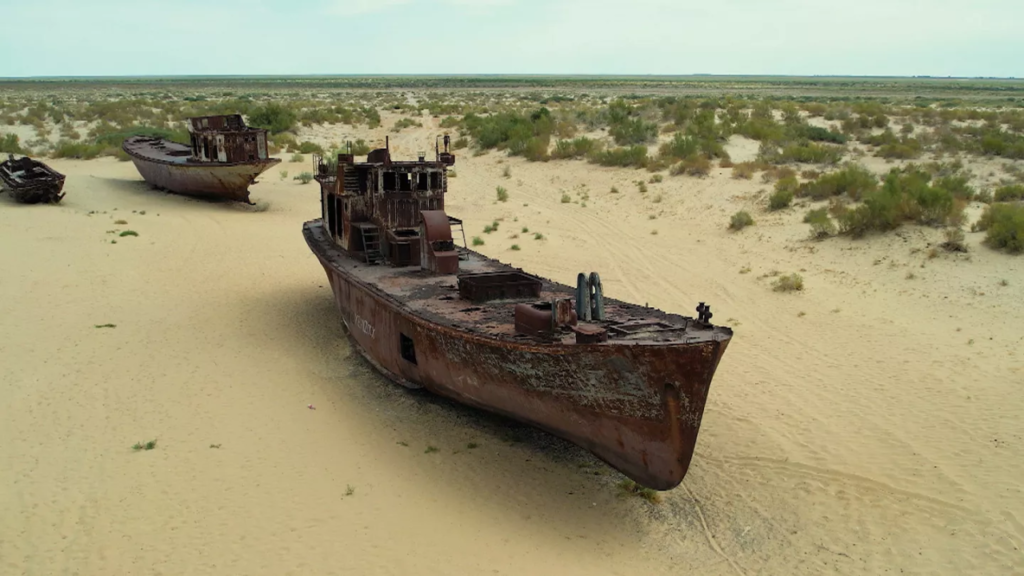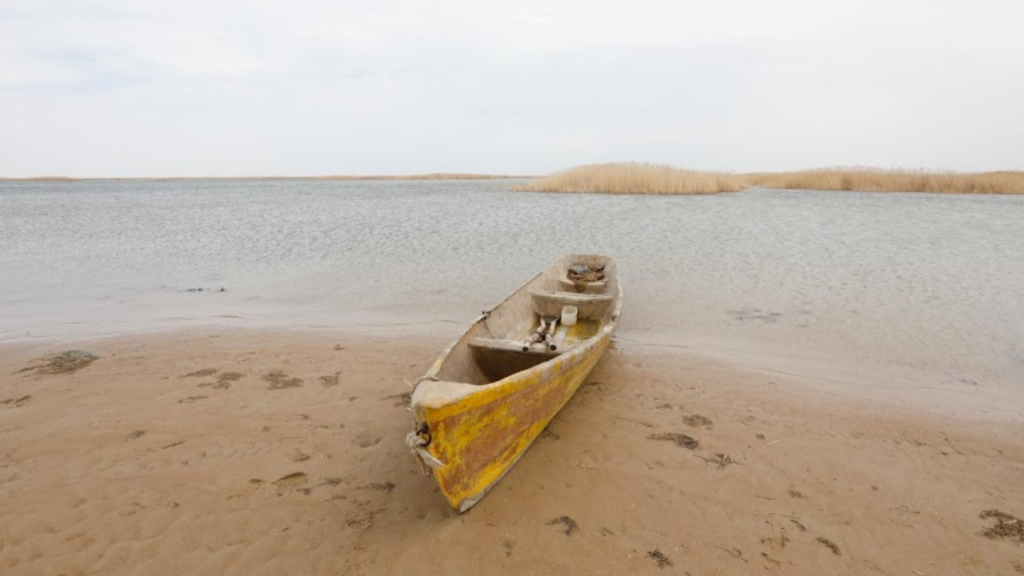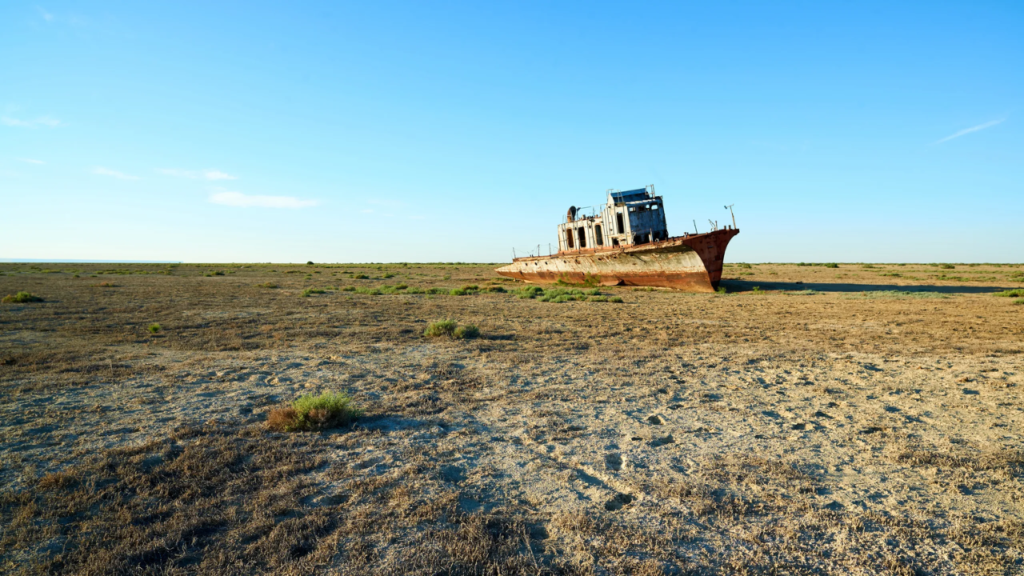
Imagine a vast expanse of shimmering blue, teeming with life and promise. This was once the Aral Sea, a jewel nestled between Kazakhstan and Uzbekistan. As the fourth-largest lake in the world, it was a source of pride, sustenance, and wonder for the people of Central Asia.
“Water is the driving force of all nature,” Leonardo da Vinci once said. Indeed, the Aral Sea was a driving force for the region’s ecology and economy. Its waters yielded bountiful fish harvests, while its moderating effect on the local climate made agriculture flourish in the surrounding lands.

But then came the turning point. In the 1960s, Soviet planners had a vision: to transform the arid plains into a cotton-growing powerhouse. They diverted the sea’s life-giving rivers, the Amu Darya and Syr Darya, to irrigate vast fields of “white gold.” Little did they know, this decision would set in motion one of the greatest environmental catastrophes of the 20th century.
Year by year, the sea began to shrink. As philosopher Heraclitus wisely noted, “No man ever steps in the same river twice, for it is not the same river and he is not the same man.” The Aral Sea was changing, and with it, the lives of all who depended on it.

By the turn of the millennium, the once-mighty sea had lost 90% of its volume. Where fish once swam, rusting ships now sat stranded on a toxic desert of salt and pesticides. The local climate became harsher, with hotter summers and colder winters. Dust storms carried poisonous particles from the exposed seabed, causing health problems for nearby communities.
“We have not inherited the Earth from our fathers, we are borrowing it from our children,” goes an old Native American proverb. The fate of the Aral Sea serves as a stark reminder of our responsibility to steward our planet’s resources wisely.

But amidst this grim tale, a glimmer of hope emerged. In 2005, Kazakhstan built the Kokaral Dam, separating the northern part of the sea. This smaller body of water, now called the North Aral Sea, has seen a remarkable recovery. Fish populations are rebounding, and with them, the fortunes of local fishing communities.
The southern part, however, remains a cautionary tale. Its eastern lobe has all but disappeared, while the western basin struggles to maintain its water levels.

Today, the Aral Sea stands as both a warning and an opportunity. It warns us of the unintended consequences of manipulating nature on a grand scale. Yet it also shows us that with determination and wise management, even the most damaged ecosystems can begin to heal.
As we face global challenges like climate change and water scarcity, the story of the Aral Sea resonates more than ever. It reminds us that our actions have far-reaching consequences, but also that it’s never too late to change course.

In the words of anthropologist Margaret Mead, “Never doubt that a small group of thoughtful, committed citizens can change the world; indeed, it’s the only thing that ever has.” As we write the next chapter in the Aral Sea’s story, let us be those thoughtful, committed citizens – for the sake of this unique ecosystem and for the health of our planet as a whole.
The tale of the Aral Sea is far from over. It’s a living testament to human ingenuity and folly, to destruction and resilience. As we stand at this crossroads, what role will you play in shaping its future – and that of other threatened wonders around the world?
